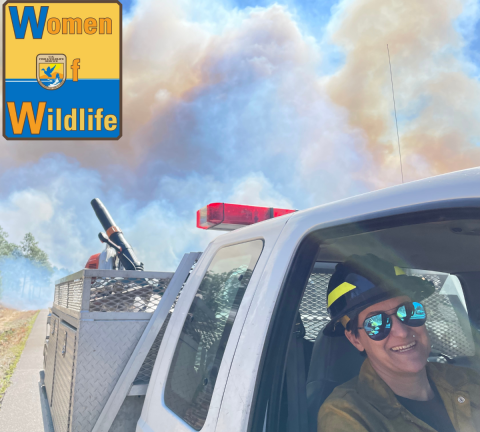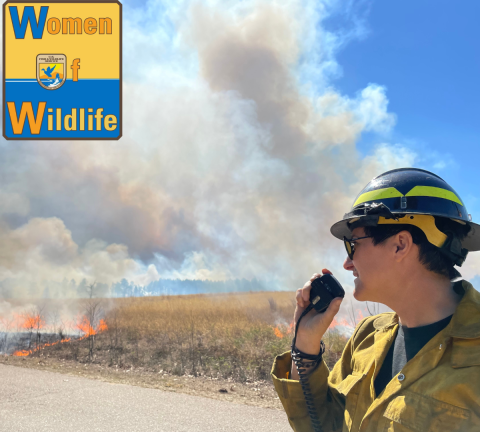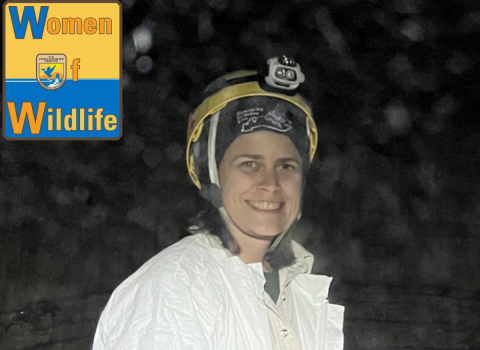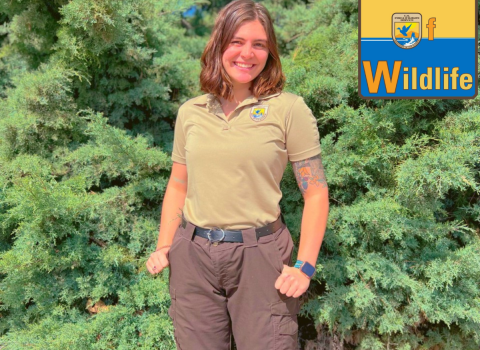Almost a century ago, 45,000 acres in the heart of Chesterfield County, South Carolina, were almost completely stripped of the longstanding, longleaf pine native to the area.
Since 1939, the team at the Carolina Sandhills National Wildlife Refuge has worked to restore the evergreen landscape to its original state. The refuge provides habitat for migratory birds and numerous other species associated with open pine and grassland communities, so management practices must enhance natural resource conservation for these habitat types.
Now, after decades of meticulous effort by the U.S. Fish and Wildlife Service, a lush longleaf pine forest, which makes up the Carolina Sandhills National Wildlife Refuge, provides homes to the endangered red-cockaded woodpecker and other wildlife.
Kimb Frey is a member of the refuge’s wildland fire crew who helps ensure the landscape remains a haven for wildlife.
“Working within the wildland fire management program for the U.S. Fish and Wildlife Service provides the perfect opportunity to support our conservation mission of supporting and maintaining healthy wildlife habitat by applying prescribed fire on the landscape and assisting in suppression efforts on wildfires,” says Frey, who hails from Libby, Montana. “Fire is an important aspect of many types of landscapes. It can purge the dead and decaying plant material hindering the growing and productive organisms. It can also destroy them.”
The Service uses fire as a vital conservation tool. From February to June, Carolina Sandhills NWR, like many refuges across the Service, conducts prescribed burns. This controlled use of fire restores wildlife habitat, reduces wildfire risk, and achieves other habitat management goals. The Service has been a leader in the safe, cost-effective use of prescribed fire since the 1930s.
“If the biologists and foresters entrusted with the care of our natural resources have determined that fire needs to be introduced to a certain landscape in order to create a healthier ecosystem, then they work closely with our fire specialists to determine the best conditions with which to reach the desired goal,” says Frey. “These conditions and goals, much like a doctor's plan of treatment, are written up as prescriptions for the fire program to follow.”
The military veteran explains she joined the Service by “happy” accident in 2010. After serving 5.5 years in the U.S. Army, Frey earned her paramedic certification. After working in that field for several years, she wanted a career change – a big one – moving from ambulatory support to wildland fire management. The fire management officer at Wichita Mountains National Wildlife Refuge in Oklahoma had a need for a qualified paramedic for a search and rescue program. It seemed a perfect match for both the Service and Frey.
“I derive much satisfaction from my role at the refuge. I can go home at the end of the day knowing I have tangibly contributed to the health and welfare of our natural environment, which in turn contributes to the health and welfare of the animals and people who live in and around our natural spaces,” says Frey who graduated from Cameron University with Bachelor of Arts in English and the University of Oklahoma with a Bachelor of Arts in anthropology.
“I also find it very rewarding to work alongside a small group of dedicated people who have the same or similar goals, to spend more days outside than indoors, and to have the ability to be doing something different nearly every day.”
Whether applying prescribed fire, extinguishing wildfire, or training new members on her fire crew, Frey brings her expertise and experience to the Carolina Sandhills NWR.
“We were very excited that she was interested in joining the fire program at Carolina Sandhills. She brings with her more than nine years of experience as a firefighter at Wichita Mountains National Wildlife Refuge and additional leadership experience from her time in the military. Our entire seasonal crew [of five] is new to Carolina Sandhills National Wildlife Refuge, so having someone with prior refuge fire experience is critical to our success this year,” said Lyne Askins, project manager at the refuge. “Kimb is calm under pressure. She has a steady voice and demeanor. The young, new crew looks to her for leadership, which is exactly the niche we needed her to fill.”
Editor’s note: During Women’s History Month, the U.S. Fish and Wildlife Service celebrates the accomplishments and commitment of women throughout the organization. The Women of Wildlife, or WOW, story series highlights some of the women serving in the Southeast Region.









